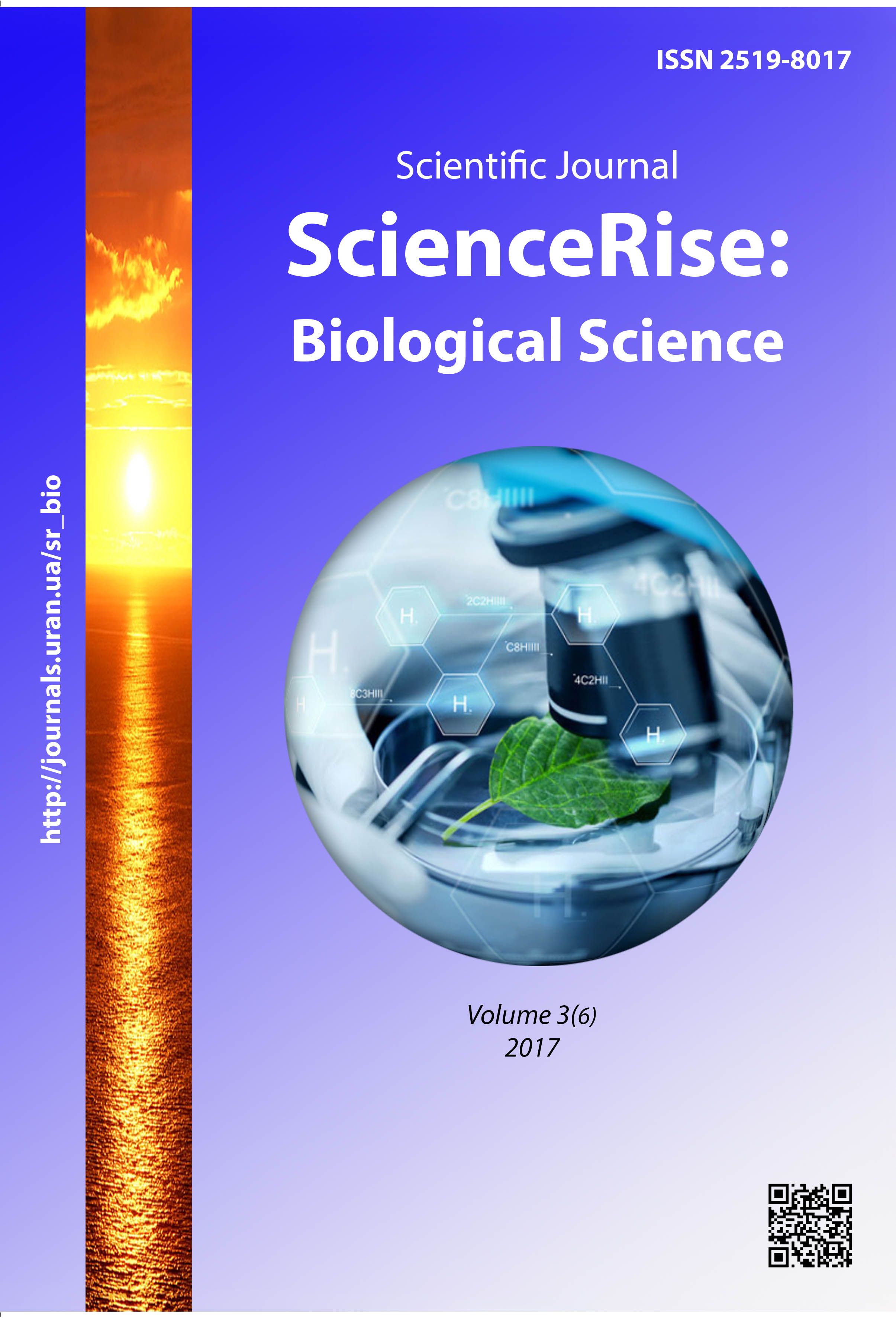General characteristics of hydrocarbon oxidazing microorganisms allocated from oil- polluted soils of Azerbaijan
DOI:
https://doi.org/10.15587/2519-8025.2017.105525Keywords:
microorganisms, oil, hydrocarbons, oil-polluted soil, micromycetes, oil fractions, conversionAbstract
Aim of research – the study of microorganisms of different oil-polluted soils (OPS) of Azerbaijan.
Methods of research. The objects of the research were samples of soils from two studied deposits: Naftalan and apsheron ones – Bibi-Eibat and Binagadi. The quantitative account of microorganisms was carried out by the method of limit dilutions. The conversion degree was determined by the weight method.
Results of research. The results of the realized researches demonstrated that among 108 isolated fungal strains, 69 were isolated from oil-polluted Apsheron soils, 21 strains – from Naftalan oil deposits, 14 strains - from Naftalan oil, 4 strains – from used Naftalan oil. It was revealed that Penicillium sp.3п strain, isolated from Naftalan oil deposit soils, is most active.
Conclusions. The isolation of more quantity of hydrocarbon oxidizing microorganisms (especially fungi) from soils of Binagadin oil deposits is explained by the presence of the large number of n-alkanes in its content. The results of conversion of Naftalan oil and its fractions by isolated active strains give a ground to suppose that the prevailing activity of Penicillium sp.3п strain is connected with its substrate specific properties
References
- Kerimov, S. V., Ismailov, N. M., Vasenev, I. I. (2008). Funktcionalno-ekologicheskaia otcenka pochv Apsheronskogo poluostrova, zagriaznennykh nefteproduktami. AgroEkoInfo, 2. Available at: http://agroecoinfo.narod.ru/journal/STATYI/2008/2/st_21.doc
- Sharonova, N. L., Pakhomova, V. M. (2009). Ekologiia pochvennoi mikrobioty i diagnostiki pochv. Kazan: Kaz GAU, 224.
- Korneykova, M. V., Evdokimova, G. A., Lebedeva, E. V. (2011). The complexes of microscopic fungi in cultivated soils polluted by oil products on the north of Kola peninsula. Mycology and Phytopathology, 45 (3), 249–256.
- Gogoleva, O. A., Nemtseva, N. V. (2012). Hydrocarbon-oxidizing microorganisms in natural ecosystems. Biulleten Orenburgskogo nauchnogo tcentra UrO RAN (elektronnyi zhurnal), 2, 1–6.
- Zayceva, T. A., Rudakova, L. V., Kombarova, M. M. et. al. (2010). Microorganisms-oil destructors. Modern scientific researches and innovations, 4, 59–63.
- Aiupova, A. Zh., Nagmetova, G. Zh., Sarsenova, A. S., Kurmanbaev, A. A. (2015). Opredelenie destruktivnogo potentciala shtammov nefteokisliaiushchikh mikroorganizmov po otnosheniiu k uglevodorodam nefti. Aktualnye problemy gumanitarnykh i estestvennykh nauk, 1, 34–36.
- Petrov, A. M. (2013). Ekologo-fiziologicheskoe sostoianie mikrobnykh soobshchestv razlichnykh tipov pochv, zagriaznennykh neftiu. Biodiagnostika v ekologicheskoi otcenke pochv i sopredelnykh sred, 164.
- Zeifert, D. V., Gamerova, L. M. (2012). Kharakter zavisimosti mezhdu kontcentratciei nefti v pochve i ee toksichnostiu. Ekologicheskii vestnik Rossii, 12, 16–19.
- Bilai, V. I. (Ed.) (1982). Metody eksperimentalnoi mikologii. Kyiv: Naukova Dumka, 552.
- Litvinov, M. A. (1967). Opredelitel mikroskopicheskikh pochvennykh gribov. Leningrad: Izd-vo «Nauka», 303.
- Khoula, Dzh., Kriga, N., Snita, P., Steili, Dzh., Uilliamsa, S. (Eds.) (1997). Opredelitel bakterii Berdzhi: v dvukh tomakh. Moscow: Mir, 800.
- Lysak, L. V., Dobrovolskaia, T. G., Skvortcova, I. N. (2003). Metody otcenki bakterialnogo raznoobraziia pochv i identifikatcii pochvennykh bakterii. Moscow: MAKS Press, 123.
- Babeva, I. P., Golubev, V. I. (1979). Metody vydeleniia i identifikatcii drozhzhei. Moscow: Pishchevaia promyshlenost, 120.
- Krasilnikov, N. R., Koronelli, T. V. (1974). Razlozhenie nefti parafinokisliaiushchimi mikobakteriiami. Prikladnaia biokhimiia i mikrobiologiia, X (4), 573–576.
- Abbasov, V. M., Gasanov, A. P., Mamedov, D. N., Musaev, N. N., Nadzhafova, G. A., Abdullaeva, N. R. (2005). Otlichitelnye osobennosti lechebnoi naftalanskoi nefti ot nekotorykh promyshlennykh neftei Azerbaidzhana. Protcessy neftekhimii i neftepererabotki, 3 (22), 32–34.
- Nechai, N. L., Kakimzhanova, A. A., Ermekkaliev, T. S. (2015). Mikromitcety – destruktory uglevodorodov. Biotekhnologiia: Sostoianie i perspektivy razvitiia, 2, 370–372.
Downloads
Published
How to Cite
Issue
Section
License
Copyright (c) 2017 Irada Babayeva, Svetlana Qasimova

This work is licensed under a Creative Commons Attribution 4.0 International License.
Our journal abides by the Creative Commons CC BY copyright rights and permissions for open access journals.
Authors, who are published in this journal, agree to the following conditions:
1. The authors reserve the right to authorship of the work and pass the first publication right of this work to the journal under the terms of a Creative Commons CC BY, which allows others to freely distribute the published research with the obligatory reference to the authors of the original work and the first publication of the work in this journal.
2. The authors have the right to conclude separate supplement agreements that relate to non-exclusive work distribution in the form in which it has been published by the journal (for example, to upload the work to the online storage of the journal or publish it as part of a monograph), provided that the reference to the first publication of the work in this journal is included.









